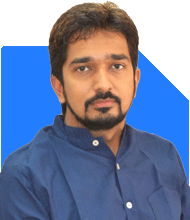Milind Vadjikar | Answer |Ask -Follow
Insurance, Stocks, MF, PF Expert - Answered on Dec 20, 2024
He has a mechanical engineering degree from Government Engineering College, Sambhajinagar, and an MBA in international business from the Symbiosis Institute of Business Management, Pune.
With over 16 years of experience in stock investments, and over six year experience in investment guidance and support, he believes that balanced asset allocation and goal-focused disciplined investing is the key to achieving investor goals.... more

I have 30 lakhs to invest and my age is 45. Where should i invest to get maximum return of my money at the age of 60.
You may invest in a combination of pure equity mutual funds such as flexicap type mutual fund, large & midcap type mutual fund and multicap type mutual fund.
You may select any fund from the top quartile of these categories.
You may expect to accumulate a corpus of around 1.64 Cr after 15 years considering modest return of 12%.
Happy Investing;
X: @mars_invest
You may like to see similar questions and answers below
Dev Ashish | Answer |Ask -Follow
MF Expert, Financial Planner - Answered on Apr 26, 2023
Dev Ashish | Answer |Ask -Follow
MF Expert, Financial Planner - Answered on Apr 26, 2023
Ramalingam Kalirajan |10187 Answers |Ask -Follow
Mutual Funds, Financial Planning Expert - Answered on May 08, 2024
Ramalingam Kalirajan |10187 Answers |Ask -Follow
Mutual Funds, Financial Planning Expert - Answered on May 22, 2024
Ramalingam Kalirajan |10187 Answers |Ask -Follow
Mutual Funds, Financial Planning Expert - Answered on May 30, 2024
Dr Nagarajan J S K |2188 Answers |Ask -Follow
NEET, Medical, Pharmacy Careers - Answered on Aug 05, 2025
Dr Nagarajan J S K |2188 Answers |Ask -Follow
NEET, Medical, Pharmacy Careers - Answered on Aug 05, 2025
Dr Nagarajan J S K |2188 Answers |Ask -Follow
NEET, Medical, Pharmacy Careers - Answered on Aug 05, 2025
Dr Nagarajan J S K |2188 Answers |Ask -Follow
NEET, Medical, Pharmacy Careers - Answered on Aug 05, 2025
Dr Nagarajan J S K |2188 Answers |Ask -Follow
NEET, Medical, Pharmacy Careers - Answered on Aug 05, 2025
Nayagam P P |9934 Answers |Ask -Follow
Career Counsellor - Answered on Aug 05, 2025
Nayagam P P |9934 Answers |Ask -Follow
Career Counsellor - Answered on Aug 05, 2025
Nayagam P P |9934 Answers |Ask -Follow
Career Counsellor - Answered on Aug 05, 2025
Nayagam P P |9934 Answers |Ask -Follow
Career Counsellor - Answered on Aug 05, 2025
Dr Nagarajan J S K |2188 Answers |Ask -Follow
NEET, Medical, Pharmacy Careers - Answered on Aug 05, 2025




















